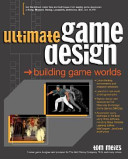Characteristics of Good Computer RPG Games
RPG players are challenged to build many physical, mental, magical, and alliance- oriented traits and leanings for their characters, and to then build relationships with other characters as well. There is a natural design emphasis on how characters are built, and what building a character then means in the context of that character’s world.
RPGs can be heavy on asset creation in art, because multiple character types, features, unique abilities, costuming, settings, props, items, and specialized interfaces are required to build a meaningful world for characters to operate in and carry on exchanges with each other.
Building a character-system matrix helps you create characters that have “complementary” powers and abilities. Different designers do this in several unique ways. You want to encourage players to experiment with building up different character types, although many players have favorite character types based on their own personal preferences.
You might have close-range-melee fighters, and encourage them to band with magic-based-projectile fighters, for instance. You might have trench bombers, whose work needs to be protected by archers. In short, you’ll be working to find ways to have a wide range of character abilities that have certain slight dependencies on each other. It can be a vast and complicated undertaking.
Many RPGs are successfully fusing character building with action elements in exciting new ways. Based on a foundational character-building system and character types, characters face all sorts of action challenges as characters grow. This also becomes largely a matter of player preference. Some players are content with simply “growing” characters by making choices in their confrontations, akin to their paper- game roots and love for games like Dungeons and Dragons. Others prefer to “grow” by participating directly in a character’s actions. Here the action element itself takes the lead.
Female players, not necessarily interested in rocket arenas, often enjoy playing RPGs that focus on building, nurturing, and communication. Everyone knows that the game market, from a content standpoint, doesn’t serve female players very well. Role-playing and character development that weaves a personal story might be one of the bridges to bringing many more female players into gaming. It’s critical to the growth of the game industry that game developers find ever more ways to build the female gaming audience.
Many RPGs are story-intensive. They require and invite elaborate story details for their characters to experience on the game path. “Story” itself is always a topic of great debate among game developers. Several RPGs have done a wonderful job with story, and used story elements to great effect. Questions like the following are common topics of discussion among developers:Howcan story best be utilized in games? Is story ultimately very important in a nonlinear experience? We’ll talk about this some more at the end of the chapter.
Notes:
- Emphasis on character building and character relations
- Asset-intensive
- Developing a character system matrix
- Melding characters with action
- Female gaming audience/emphasis on social interaction
- Story intensive
Folksonomies: gaming rpg roleplaying game development
Taxonomies:
/hobbies and interests/games/role playing games (0.513579)
/art and entertainment/movies and tv/movies (0.391269)
/shopping/toys/action figures (0.374890)
Keywords:
character (0.909927 (positive:0.063231)), multiple character types (0.778385 (neutral:0.000000)), Female gaming audience/emphasis (0.770540 (neutral:0.000000)), female players (0.766093 (positive:0.451663)), RPG Games Emphasis (0.760775 (positive:0.288935)), favorite character types (0.759919 (positive:0.247876)), characters (0.755145 (negative:-0.007167)), character building (0.749817 (positive:0.563259)), natural design emphasis (0.739104 (positive:0.805732)), certain slight dependencies (0.724716 (negative:-0.411258)), elaborate story details (0.712886 (positive:0.412149)), game developers (0.694029 (positive:0.699782)), RPGs (0.653790 (positive:0.239235)), character relations (0.643965 (positive:0.288935)), character system matrix (0.641521 (neutral:0.000000)), RPG players (0.617350 (negative:-0.485170)), different character (0.616374 (positive:0.562332)), character abilities (0.615981 (negative:-0.411258)), foundational character-building (0.600833 (positive:0.757319)), character development (0.598191 (positive:0.621915)), social interaction (0.592701 (neutral:0.000000)), close-range-melee fighters (0.588677 (neutral:0.000000)), trench bombers (0.587489 (negative:-0.231169)), complicated undertaking (0.587007 (positive:0.652653)), unique abilities (0.585343 (positive:0.208779)), asset creation (0.585123 (positive:0.215810)), magic-based-projectile fighters (0.584191 (neutral:0.000000)), new ways (0.584120 (positive:0.428706)), meaningful world (0.582424 (positive:0.882019)), Howcan story (0.581177 (positive:0.472504))
Entities:
game:Sport (0.739062 (positive:0.322446))
Concepts:
Role-playing game (0.959433): dbpedia | freebase | opencyc
Dungeons & Dragons (0.790795): website | dbpedia | freebase | opencyc | yago
Storytelling game (0.655971): dbpedia | freebase
Computer role-playing game (0.636760): dbpedia | yago
Wargaming (0.627863): dbpedia | freebase | yago
Role-playing video game (0.607824): dbpedia | freebase
Preference (0.591079): dbpedia | freebase | opencyc
Novel (0.579478): dbpedia | freebase | opencyc





